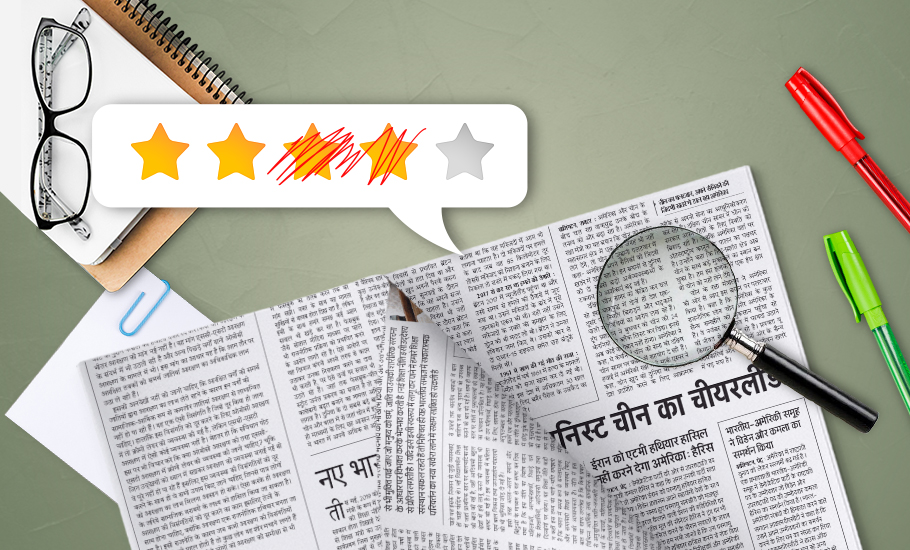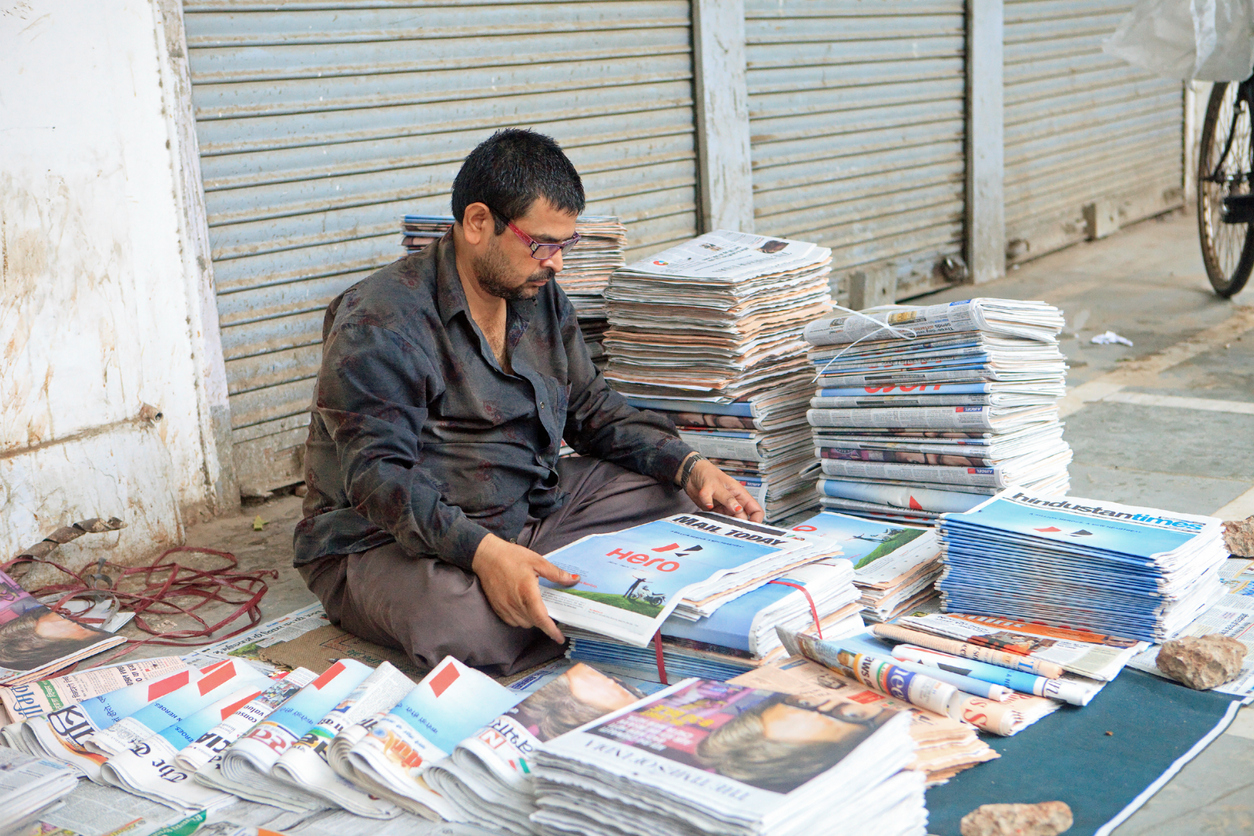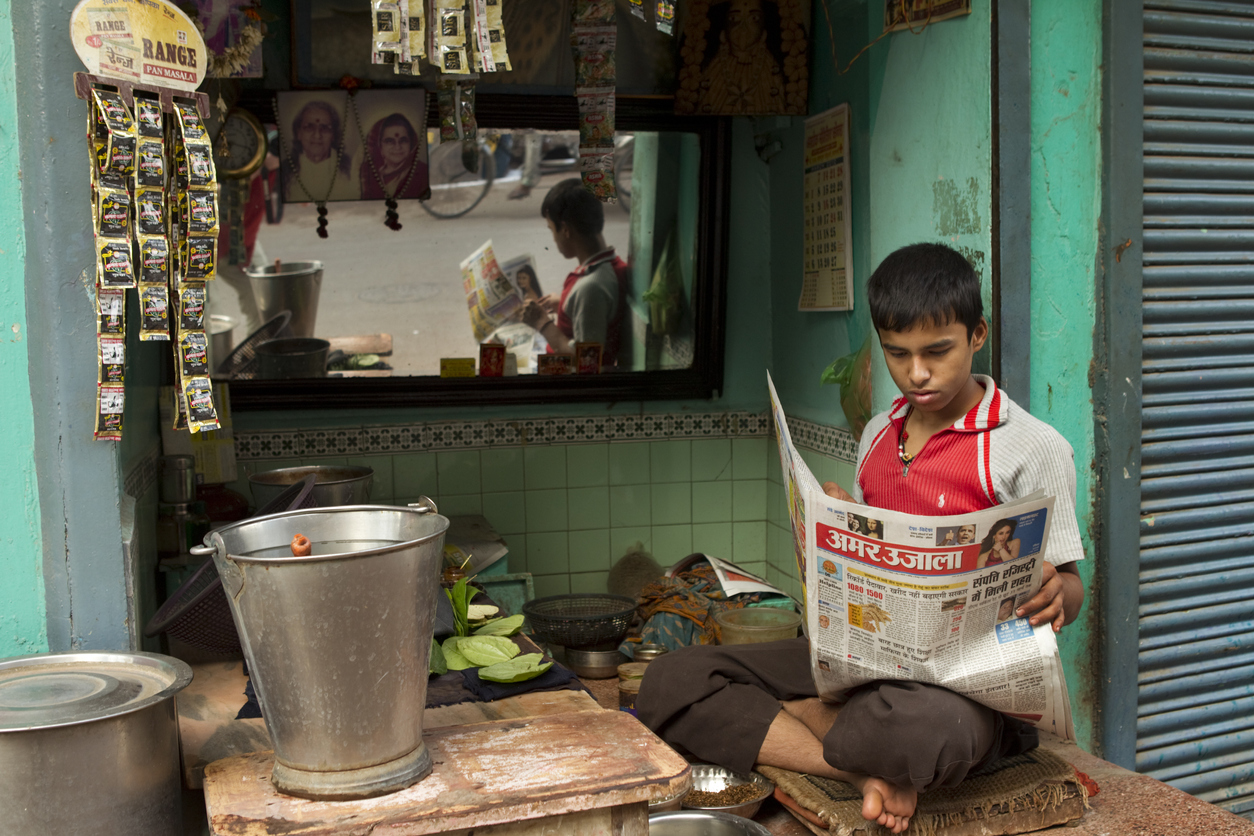
- Home
- News
- Analysis
- States
- Perspective
- Videos
- Education
- Entertainment
- Elections
- World Cup 2023
- Features
- Health
- Business
- Series
- Economy Series
- Earth Day
- Kashmir’s Frozen Turbulence
- India@75
- The legend of Ramjanmabhoomi
- Liberalisation@30
- How to tame a dragon
- Celebrating biodiversity
- Farm Matters
- 50 days of solitude
- Bringing Migrants Home
- Budget 2020
- Jharkhand Votes
- The Federal Investigates
- The Federal Impact
- Vanishing Sand
- Gandhi @ 150
- Andhra Today
- Field report
- Operation Gulmarg
- Pandemic @1 Mn in India
- The Federal Year-End
- The Zero Year
- Premium
- Science
- Brand studio
- Home
- NewsNews
- Analysis
- StatesStates
- PerspectivePerspective
- VideosVideos
- Entertainment
- ElectionsElections
- Sports
- Loading...
Sports - Features
- BusinessBusiness
- Premium
- Loading...
Premium

The op-ed space is shrinking in Hindi newspapers and what it means
Greater awareness of healthy nativism and regionalism, especially at the grassroots, can lead to a brighter future for the Hindi press.

The strength of a newspaper primarily lies in the vibrancy of its edit page with its leader comment and the op-ed columns and not just in circulation numbers. Newspapers are not just messengers. The edit page is central to them. While the editorials seek to set the direction for public policy, the op-ed articles and the ‘Letters to the Editor’ section constitute the vibrant arena of...
The strength of a newspaper primarily lies in the vibrancy of its edit page with its leader comment and the op-ed columns and not just in circulation numbers. Newspapers are not just messengers. The edit page is central to them.
While the editorials seek to set the direction for public policy, the op-ed articles and the ‘Letters to the Editor’ section constitute the vibrant arena of public debate and shape public opinion.
As an institution, the media played an intellectual leadership role in the society. The edits were called ‘leader comments’ and they enjoyed autonomy not only vis-à-vis the powers that be, but also avoided pandering to the base sentiments of the ‘masses’.
The character of the editorial page gives a newspaper its distinct identity. More vibrant the edit page, stronger is the impact of the newspaper. However, a large number of veteran journalists and seasoned media observers feel that the editorial calibre of the regional print media in the crucial Hindi heartland has drastically declined.
It is common knowledge that in the digital age, the print media as a whole is passing through a multi-faceted crisis — mainly the crisis of financial viability, competition from the visual media and internet, and the crisis of shrinking circulation.
In this article however, we will deal mainly with the crisis of declining edit page quality in the regional print media in the Hindi region. The Federal spoke to many media insiders and long-term media watchers about the crisis of declining edit page quality in the Hindi print media and below we summarise their views.
The print media as a whole suffers from a serious revenue crunch and this has contributed considerably in no small measure to the dip in edit page standards.
Pranav Kumar Choudhary, a senior Patna-based journalist who was with The Times of India, tells The Federal: “Like the electronic media chases TRP-ratings, the Hindi newspapers have started chasing circulation figures to get more ads, and hence, cheap sensationalism sets the editorial direction.”
“Tabloid journalism has become the mainstream journalism and back pages full of gossip and semi-porn have acquired greater importance than the front page news and the edit page comments. With crime reporting in the lead, the papers resemble scandal-sheets. The regional media’s role leaves much to be desired when they whip up war frenzy after a Pulwama or border clash with China or when they engage in biased majoritarian reporting of riots like the recent Delhi riots. People’s movements are seldom covered but ghost-written articles in the name of Narendra Modi, Amit Shah and Ravi Shankar Prasad are being carried regularly on the editorial page,” he says.
“Earlier, stalwarts like Rajendra Mathur, Girilal Jain, Raghuvir Sahai and SP Singh as editors gave credibility to their newspapers. Their editorials used to echo in the state Assemblies. Op-ed columns were written by experts on the subjects. But now faceless people nominated from the administrative side of the newspapers are asked to write editorials,” Choudhary says.

Revenue crisis
Why has this compulsion for a cheap populistic turn in journalism arisen? A major manifestation of the crisis seems to be declining circulation of Hindi newspapers.
Despite the steady increase in the circulation of Hindi dailies between 2006 and 2016 from 39.1 million to 62.8 million, the circulation declined after 2016. During July-December 2019, the circulation of Hindi dailies declined by 2.54 lakhs as per the Indian Readership Survey (IRS) data.
And, the direct sales of newspapers account for less than one-fifth of the total revenue of many newspapers and they run mainly on advertisement support. But greater circulation counts for getting more advertisements.
Now, the revenue stress aggravated by the COVID-19 pandemic has precipitated an existential crisis for the print media as a whole. Even before the pandemic set in, the ₹30,500-crore Indian print media industry had shrunk by 3% in 2019 according to a joint study by FICCI and EY (Ernst Young).
The Indian Newspaper Society (INS) estimates the loss to the print medium in the range of ₹12,000-₹15,000 crore due to the lockdown. Deloitte India estimates that the print media would suffer 60–70% drop in advertising revenue. Considering that the ad revenue constitutes 75–80% of the total revenue in many newspapers, this could be a near-mortal blow if sustained for long.
Such a grim revenue crisis, driven primarily by the fall in circulation, is causing tremendous pressure to increase the circulation at any cost, and hence, we see sensationalism ruling the roost in not only the edit page but also in news coverage. This is clear from the fact that UP-Bihar flood havoc and the uncertainty and difficulties in conducting elections in Bihar amidst a pandemic get one-tenth the coverage in the edit page than what Rhea Chakraborty gets.
Journalists under fire
If the newspapers were to stick to their professional dharma, they would inevitably adopt an oppositional role. At times, newspapers have played a more vibrantly critical watchdog’s role than the electoral political opposition.
Newspapers have also shaped the public opinion to rise in revolt against injustice and assault on liberty.
But recently, several brave journalists who courageously exposed vested interests have been physically attacked and even killed. There is an atmosphere of intimidation and terror.

Jaleshwar Upadhyay, who was working for Aaj Tak and later for Amar Ujjala, told The Federal: “Recently, Professor Apoorvanand of Delhi University, who wrote op-ed pieces on CAA highly critical of the Modi government, was picked up by the police and questioned for 10 hours. Another journalist Prashant Tandon was also interrogated for 14 hours and most of the questions were about his role in the coverage of Delhi riots. An atmosphere of terror is being created among those who write or speak exposing the establishment.”
Digital push
Mohmmad Raza, a former sub-editor of Rashtriya Sahara, tells The Federal: “Print media journalists were not being paid even half of what the Majithia Wage Board recommended, and hence, there was a talent drain to the electronic media. This trend has stopped now as the electronic media too is retrenching but people are moving to the digital media. YouTube news channels are mushrooming and one such Hindi channel has a readership of 8 lakhs.”
Urmilesh, a veteran journalist who had worked for Hindustan and Navbharat Times and who now contributes for The Wire, NewsClick and BBC Hindi, tells The Federal, “I wrote a story on Ambedkar in The Wire (Hindi) and from the number of hits, I could make out that around 3.5 lakh people have seen that. I can never hope to have this kind of reach in print media. We should also move ahead with the advancing media technologies.”
Dilip Choubey, who just retired as the Editor of the Uttarakhand edition of Rashtriya Sahara, says that paid news is more in Hindi press than in English press. The quantum increases astronomically during elections. If newspapers can earn their normal average annual earning in just a couple of months before general elections through paid news, one can well imagine the odds the editors would face in maintaining editorial independence.
Political funding combined with the discretionary powers of the government in allotting the quantum of ads could be powerful levers for enforcing editorial capitulation, he says.
Despite all the odds it is facing, regional media is embedded in local conditions and rooted in local traditions. It mostly generates original fresh information than reprocessing the pre-existing information on the Internet.
Unlike the anchor-centric short attention span of the visual media, there is space for specialised columnists and informed opinions and debates in the print media and hence organically there is scope for greater intensity of communication in the regional media. Varied regional cultures can also give rise to distinct media styles. Creativity need not be monolithic and it can have immense geospatial variations.
Like regional languages and regional cultures, the regional media can never die. Unfortunately however, they can also keep vegetating within their insularity without development. But there is ample space potentially for a renaissance of healthy nativism and regionalism. Greater awareness of these crosscurrents, especially at the grassroots, can lead to a brighter future for the regional Hindi press.

